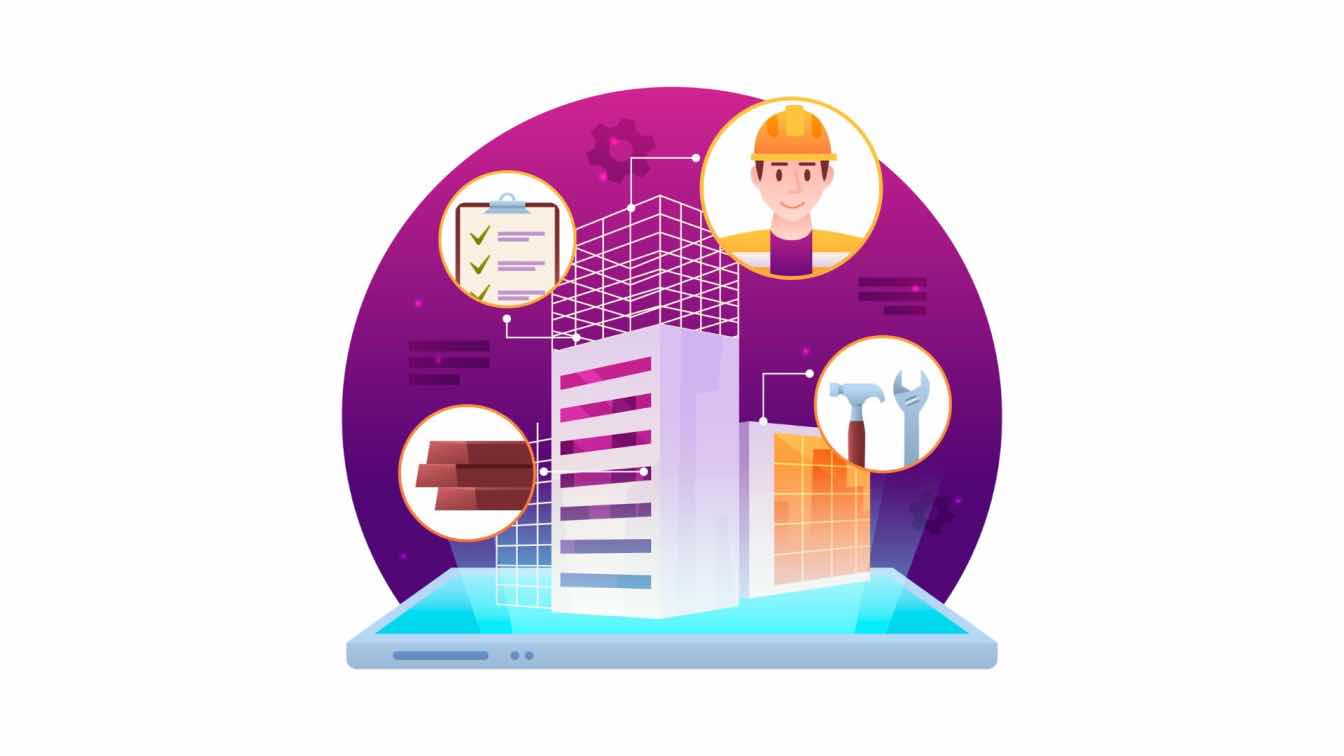Building analytics platforms have become indispensable tools for facility managers, engineers, and architects seeking to maximize the potential of their structures. By harnessing the power of big data, IoT sensors, machine learning algorithms, and cloud computing, these platforms offer insights that were previously inaccessible. High time to discuss ways to construct an effective building analytics platform that captures and processes data as well as helps to transform it into actionable insights for better decision-making and building resource usage.
What Is Usually Meant by “Building Analytics”?
Building analytics is the systematic process of collecting, analyzing, and interpreting data generated within a building's infrastructure. It goes beyond traditional data analysis, offering a holistic view of various aspects, from energy consumption to space utilization. This depth of insight empowers stakeholders to make informed decisions, optimize operations, and enhance overall efficiency.
3 Key Components That Make Building Analytics Framework
From smart sensors to advanced data analysis, the key components of building analytics shape the future of sustainable and efficient structures. The key components are the following:
1. Data Collection Infrastructure
Intelligent sensors and devices strategically placed throughout the building gather data on various parameters. These may include temperature, humidity, occupancy, and energy consumption. The data collected serves as the raw material for subsequent analysis, forming the foundation for informed decision-making. Integration of IoT-enabled sensors further amplifies the potential, creating a network that communicates seamlessly.
2. Integration and Interoperability
The success of a building analytics framework lies in its ability to bridge gaps between diverse systems and technologies. Integration and interoperability ensure that data from various sources can be harmoniously merged and analyzed. This not only includes internal building systems like HVAC and lighting but extends to external sources such as weather data and utility grids. Apart from this, a unified data platform acts as the nerve center, consolidating data streams and facilitating a comprehensive view of the building's performance. Here come Application Programming Interfaces (APIs) and middleware solutions that make seamless communication between disparate systems possible.
3. Advanced Analytics Algorithms
The true power of a building analytics framework emerges when data is transformed into actionable insights. Advanced analytics algorithms, driven by artificial intelligence and machine learning, elevate the system to a predictive and prescriptive level.
Predictive Maintenance Models. Machine learning algorithms can predict equipment failures before they occur, enabling proactive maintenance. By analyzing historical data and identifying patterns, the system can alert maintenance teams to potential issues, minimizing downtime and reducing operational costs.
Anomaly Detection. Sophisticated algorithms continuously monitor data for anomalies, flagging deviations from normal patterns. This early detection capability is invaluable for identifying inefficiencies, security breaches, or equipment malfunctions promptly.
How To Implement Building Analytics?
As technology continues to advance, the implementation of building analytics has become increasingly popular in the real estate industry. Successfully implementing a building analytics framework requires planning and adherence to best practices.
Start With Defining Clear Objectives
As always, before jumping into integrating any sort of framework, it is quite important to set clear and measurable objectives for the building analytics framework. Define what success looks like for your organization — whether it's improving energy efficiency, reducing operational costs, or enhancing occupant comfort. Also, don’t forget to consider the diverse needs of stakeholders, from facility managers to financial decision-makers. Tailoring objectives to align with these varied perspectives ensures that the analytics framework delivers value across the organization.
Invest in User-Friendly Dashboards
The success of a building analytics framework is contingent on its accessibility and usability. Invest in intuitive and user-friendly dashboards that present complex data in a digestible format. Visualization tools, such as charts and graphs, enable stakeholders at all levels to interpret information effortlessly. Also, designing dashboards may help different user groups to focus on metrics relevant to their roles. No matter if it is facility maintenance or executive decision-making, tailoring dashboards enhances the framework's effectiveness.
Don’t Forget About Regular System Audits and Updates
To maintain peak performance, regular system audits and updates are non-negotiable. Technological advancements, security enhancements, and evolving business needs necessitate a proactive approach to system maintenance. Establish proactive maintenance protocols that include regular checks on hardware, software, and data integrity. Addressing potential issues before they escalate ensures the longevity and reliability of the building analytics framework.
Integration with Existing Systems
Seamless integration with existing building systems is critical for a cohesive and efficient analytics framework. HVAC, lighting, or security systems, the ability to integrate data from disparate sources provides a full overview on building performance. Also, we are to anticipate future technological developments and ensure that the analytics framework can adapt to emerging systems. This future-proof approach prevents obsolescence and positions the organization at the forefront of technological innovation.
Overcoming Frequent Challenges in Building Analytics Implementation
While the benefits of building analytics are substantial, challenges may arise during implementation. Addressing these challenges head-on is crucial for the long-term success of your framework.
Challenge #1: Protecting Sensitive Information
The collection and analysis of building data bring forth concerns regarding data security and privacy. The sensitive nature of this information necessitates robust measures to safeguard against unauthorized access and potential breaches.
To address data security challenges, organizations should implement robust encryption protocols and access controls. Encrypting data both in transit and at rest adds an extra layer of protection. Access controls ensure that only authorized personnel have permission to view or manipulate sensitive information.
Challenge #2: Compatibility Issues with Existing Systems
Integrating the building analytics framework with existing systems can pose compatibility challenges. Ensuring seamless communication between diverse systems is essential for a cohesive and efficient analytics ecosystem.
To overcome integration challenges, organizations should adopt future-proof integration protocols. This involves anticipating technological developments and designing the analytics framework to adapt to emerging systems. Establishing well-defined APIs and middleware solutions enhances interoperability, allowing for smooth data exchange between different components.
Challenge #3: Resistance of Staff to Adapt to Changes
Introducing a building analytics framework may encounter resistance from staff unfamiliar with the technology. Overcoming this hurdle requires a strategic approach to encourage adoption and foster a culture of continuous learning.
Investing in comprehensive training programs is crucial for empowering staff to navigate the analytics framework confidently. Additionally, adopting change management strategies helps address resistance by clearly communicating the benefits of the new system and illustrating how it aligns with organizational goals.
Discovering Efficiency with Building Analytics Software
The insights gained from a CIM analytics system empower businesses to optimize resources, enhance sustainability, and stay agile in a dynamic market. The advanced analytics software like this not only highlights subtle inefficiencies within a building but also serves as a proactive guide, offering predictive insights that enable organizations to stay ahead of potential issues.





